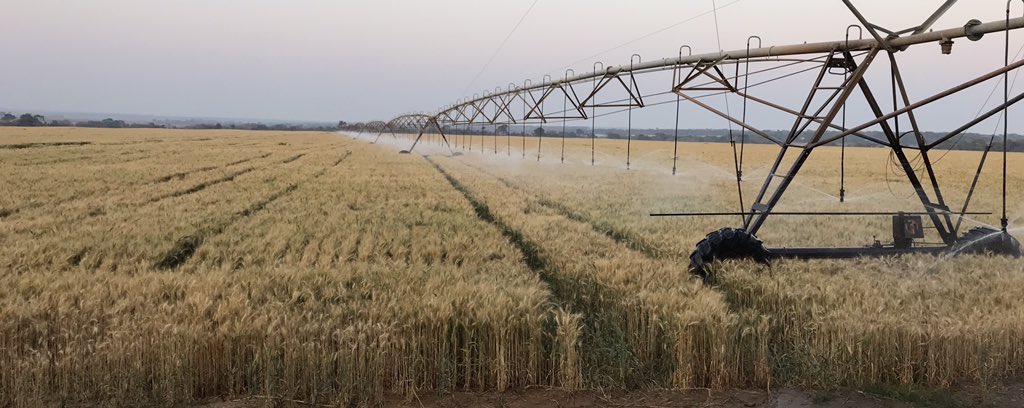As the cool months settle in across Zimbabwe, a quiet but critical transformation is unfolding in the countryside. Fields are being tilled, seeds are being sown, and farmers are racing against time to establish what is expected to be the country’s largest wheat crop in its history. The Government of Zimbabwe, working in collaboration with the private sector and farming communities, has set an ambitious target: 600,000 tonnes of wheat by the end of the season.
This goal marks a bold new chapter in Zimbabwe’s agricultural narrative, where self-sufficiency in staple crops is no longer a distant dream but an emerging reality. Last year’s historic harvest of 563,961 tonnes was a testament to what is possible through a combination of strategic planning, policy support, and farmer resilience. Now, the focus is on building even greater momentum.
Early Planting and Land Preparation Underway
Across parts of the country, particularly in traditionally strong farming regions, farmers who completed their summer harvests early have swiftly turned their attention to winter cropping. According to Dr. Prince Kuipa, Operations Director at the Zimbabwe Farmers Union, early planting is key to maximizing the winter window and ensuring a harvest before the onset of the next rainy season.
“Some farmers have already planted their wheat while others are preparing the land. Early planting will maximize use of the winter window and enable the crop to be harvested before the onset of the rainy season,” Dr. Kuipa explained.
However, challenges remain. Chief among them is the shortage of tillage services. Demand for mechanical land preparation far exceeds supply, despite efforts by the Agricultural Finance Corporation (AFC) and the Agricultural Rural Development Authority (ARDA) to step in with available equipment. The bottleneck is not new, but it has become a critical concern given the ambitious targets set for this season.
A Supportive Infrastructure—With Some Gaps
While tillage remains a hurdle, other aspects of the production chain are showing positive signs. The Zimbabwe Electricity Transmission and Distribution Company (ZETDC) has assured farmers of uninterrupted electricity supply to keep irrigation systems running. Dam levels are reportedly healthy after a robust rainy season, ensuring sufficient water availability during the critical crop-growing months.
Input suppliers have also confirmed the ready availability of key agricultural inputs—seeds, fertilizers, herbicides, and insecticides—allowing farmers to access the tools they need to succeed. Financial institutions, historically cautious about lending to cereal producers, have come on board through contract farming schemes and targeted loans. However, outstanding payments from the Grain Marketing Board (GMB) for previous deliveries have strained some farmers’ ability to procure new inputs, potentially limiting the area under cultivation.

Government Strategies and Targets
According to Mr. Leonard Munamati, acting chief director of ARDA, the government’s strategy hinges on both expanding the wheat cultivation area and improving yields. The plan is to increase the area under wheat to 120,000 hectares while boosting average productivity from 4.7 tonnes per hectare to 5 tonnes per hectare.
This is all part of the Wheat-Based Food Security Strategy, a comprehensive approach approved by Cabinet that seeks to ensure full national self-sufficiency, create an export surplus, and establish a strategic wheat reserve of 250,000 tonnes.
The achievement of last season’s record harvest demonstrated Zimbabwe’s ability to shift from being a net importer of wheat—struggling to meet a 360,000-tonne national requirement—to a self-sufficient nation. It was a significant milestone not just in food security but also in economic resilience, reducing dependence on costly grain imports.
Weather, Financing, and Farmer Sentiment
Farmers have also been buoyed by favorable weather patterns. The rains received during the Easter period, described by Zimbabwe National Farmers Union president Mrs. Monica Chinamasa as “God-sent,” have facilitated easier land preparation, especially for those who had delayed after summer harvesting.
Nonetheless, securing finance remains a significant challenge. While contract farming and bank loans offer pathways for accessing capital, the delays in payments from the GMB mean that some farmers are entering the winter cropping season under financial pressure. The ability to bridge this gap quickly will be critical to reaching the government’s targets.
A New Era for Agriculture
The Government’s commitment to agricultural revitalization under the Second Republic has been underscored by broader frameworks like the Agriculture Recovery Plan, the Agriculture and Food Systems Transformation Strategy, and the National Development Strategy 1 (NDS1). These initiatives collectively support the vision of an “empowered and prosperous upper middle-income society” by 2030.
Wheat production, once crippled by frequent power cuts, high production costs, and funding shortfalls, is now increasingly seen as a cornerstone of Zimbabwe’s food security and economic strategy. The integrated efforts of both public and private sectors, combined with the resilience of farmers, are gradually transforming the agricultural landscape.
As tractors rumble across fields and irrigation pivots sweep across newly planted wheat fields, Zimbabwe’s farming community is not just planting seeds in the soil—they are planting hope for a stable, self-sufficient future.